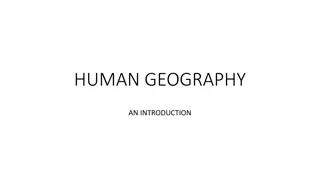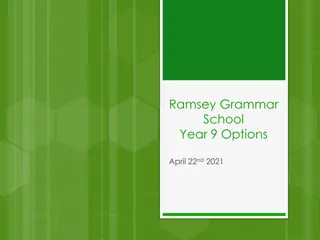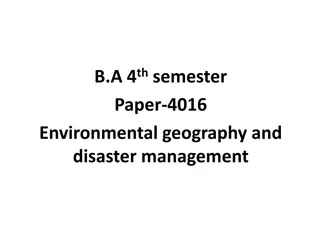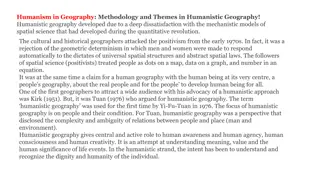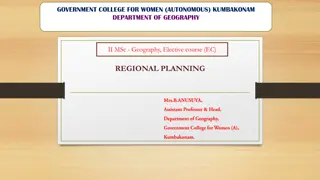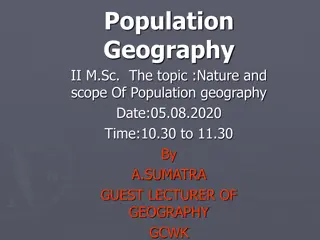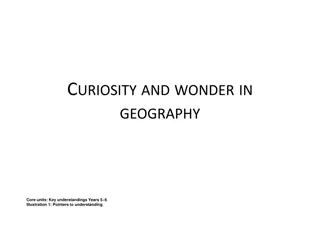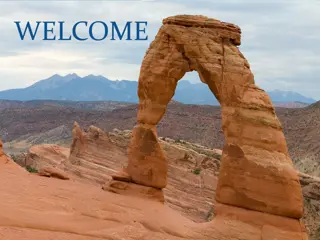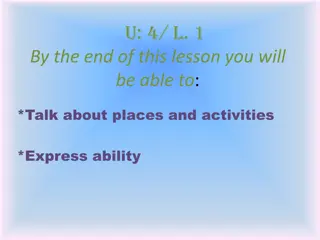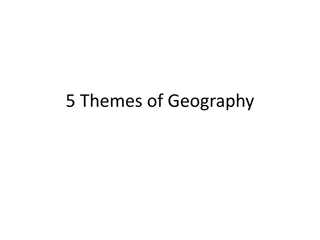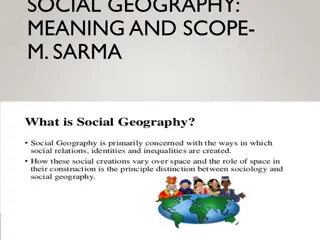Exploring Human Geography: Culture, Population, and Places
Delve into the diverse elements of human geography, from the intricacies of culture including food, religion, and language to the dynamics of population geography like natural increase rates and population density. Gain insights into political, urban, and economic geography as you discover where the majority of the world's population resides and the major religions practiced globally.
Download Presentation

Please find below an Image/Link to download the presentation.
The content on the website is provided AS IS for your information and personal use only. It may not be sold, licensed, or shared on other websites without obtaining consent from the author. Download presentation by click this link. If you encounter any issues during the download, it is possible that the publisher has removed the file from their server.
E N D
Presentation Transcript
Chapter 4 Human Geography People and Places Section 1 The Elements of Culture Section 2 Population Geography Section 3 Political Geography Section 4 Urban Geography Section 5 Economic Geography
Section 1: The Elements of Culture a. What factors make up culture?
Food Shelter Religion Relationships to family and others Language Education Security Political and social organizations Entertainment
Language is spread by following trade or migration routes.
Judaism Christianity Islam Hinduism Buddhism
Section 2 Population Geography Main Idea a. How is the rate of natural increase determined?
The natural rate of increase is determined by subtracting the mortality rate from the birthrate.
Main Idea b. Why must the population density figures for a country be used with caution?
They may not reflect the distribution of the population or the economic activities that change the carrying capacity (number of organisms a piece of land can support)
Main Idea c. Where does the majority of the world s population live?
Two-thirds of the worlds population lives in the zone between 20 N and 60 N latitude. More than half live in rural areas.
Geographic Thinking What role has industrialization played in population growth? Think about: -infant mortality rate -improved living conditions
With industrialization has come improved health and sanitation. The world s population has grown; more babies are born, and more people are living longer due to improved food supplies.
Section 3 Political Geography Main Idea a. How do the three basic geographic characteristics affect a nation?
Size may affect the amount of political or economic power a nation has. Shape may affect how it can be governed, or how goods are moved to all areas of the country, and how it relates to neighboring countries. Location relates to issues of protection, security, and accessibility.
Main Idea b. What is the difference between natural and artificial boundaries?
Natural boundaries use physical features to divide nations. Artificial boundaries are drawn by people to divide lands.
Main Idea c. Why do local and regional political systems exist?
To make governments more efficient and to pursue common goals.
Geographic Thinking Which type of boundary would most likely cause the greatest political problems? Think about: -types of natural borders -artificial boundaries
Artificial boundaries may overlap with traditional, cultural, or historic boundaries and thus cause disagreements.
Section 4 Urban Geography Main Idea a. What components make up a metropolitan area?
Metropolitan area consists of a main city, its suburbs, and exurbs.
Main Idea B. What are some basic land use patterns in cities?
Residential Commercial Industrial
Main Idea c. What are some functions of an urban area?
Functions include retailing, wholesaling, government services, education, entertainment, recreation, residential, commercial, industrial, and religious and social services.
Geographic Thinking How does land value influence the activities that take place on a piece of urban land? Think about: -land use patterns -the CBD (central business district)
The activities that generate more money are often found on very valuable land, usually in the CBD. Activities that take a lot of land, such as industrial plants, will use less valuable land.
Section 5 Economic Geography Main Idea a. What are the basic activities in each of the four economic activity levels?
Primary gathers raw materials. Secondary adds value to the materials by changing their form. Tertiary furnishes business or professional services. Quaternary provides information management and research.
Main Idea b. What role do natural resources play in the economy of a country?
Natural resources may form the basis of a country s economy.
Main Idea c. What systems are a part of a country s infrastructure?
Power, communications, transportation, water, sanitation, education.
Geographic Thinking Fossil fuels are non-renewable resources. What does this suggest about worldwide supplies of this energy? Think about: -industrial need for power -alternative sources of power
Those who have fossil fuels can use them to develop their economy or sell to others who need them. Alternative sources of power will need to be used when fossil fuels run out.





